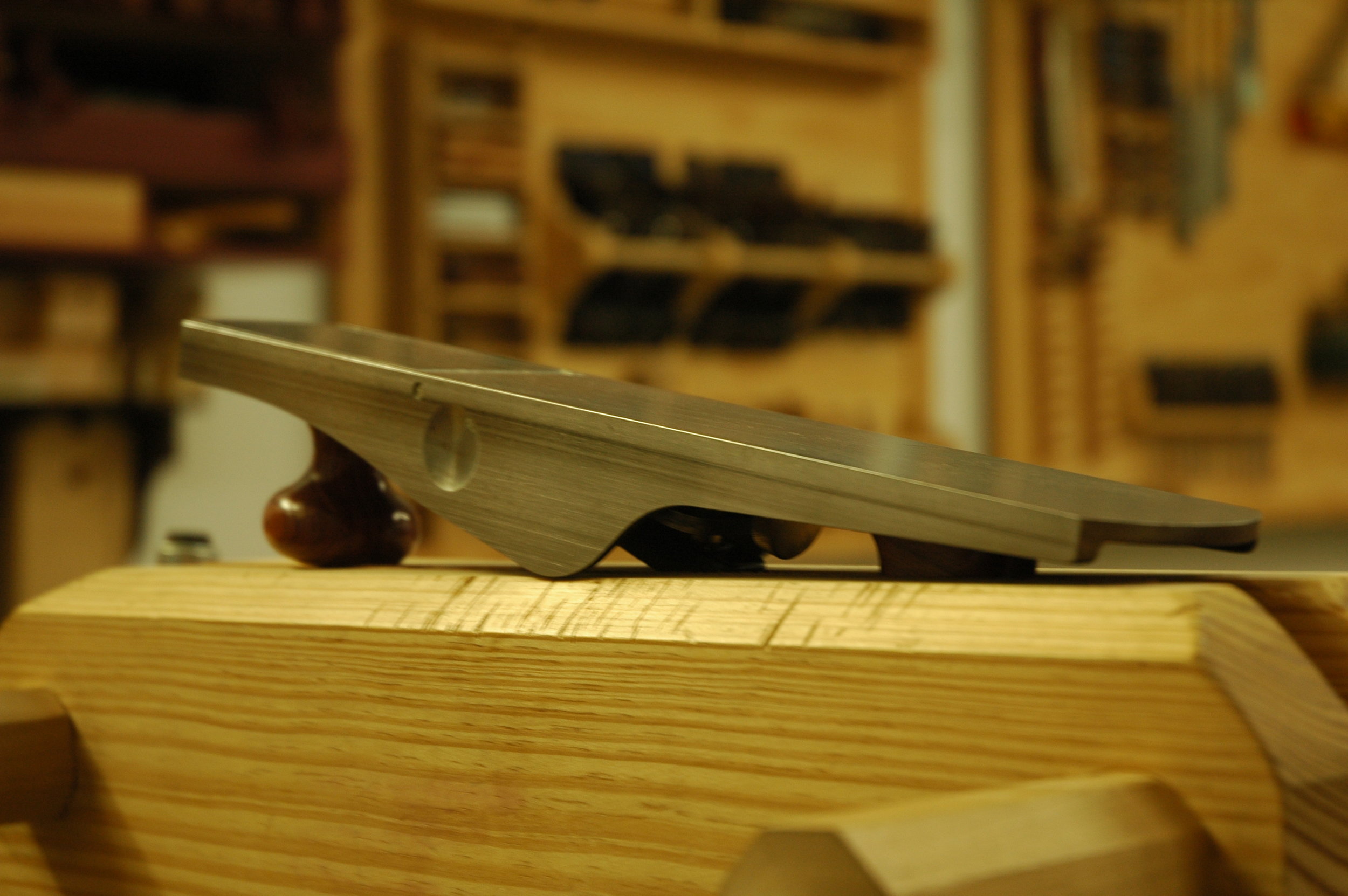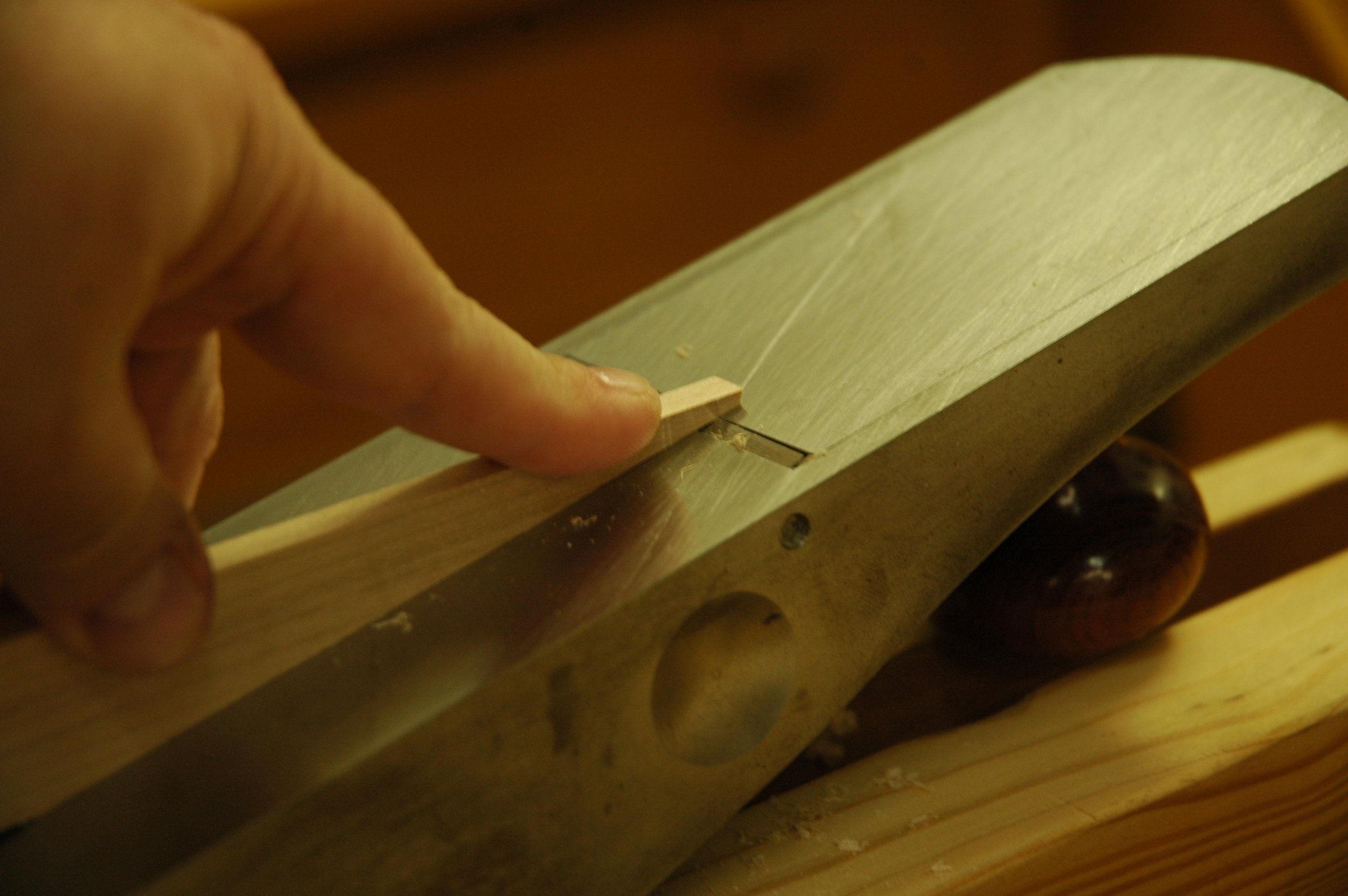Upside Down Tool Usage
***previously posted to Popular Woodworking's Blog***
 We have these adages in the woodworking world: Hand-tool woodworkers prefer taking the tool to the wood, power-tool users prefer taking the wood to the tool; Westerners operate on the push, Easterners on the pull. I’m here to say we need an adage for a technique I’ve been finding extremely useful. Let’s call it the Australian way: Using tools upside down.
We have these adages in the woodworking world: Hand-tool woodworkers prefer taking the tool to the wood, power-tool users prefer taking the wood to the tool; Westerners operate on the push, Easterners on the pull. I’m here to say we need an adage for a technique I’ve been finding extremely useful. Let’s call it the Australian way: Using tools upside down.
These past weeks I’ve been making lots of small parts in batches – the kinds of things that if, using tools the “proper ” hand-tool way (clamping them up so we can securely take the tool to the wood), would have taken an inordinate amount of time. But because of an upside-down technique I was able to batch them out quickly, with greater control and more accuracy. It also showed me another reason why I so love my low-angle jack plane.
” hand-tool way (clamping them up so we can securely take the tool to the wood), would have taken an inordinate amount of time. But because of an upside-down technique I was able to batch them out quickly, with greater control and more accuracy. It also showed me another reason why I so love my low-angle jack plane.
Coopers use a giant jointing plane by turning it upside down and leaning it against the wall. I took that idea and clamped my jack plane into a vise upside down. This enabled me to hold the piece of wood and control its passage over the blade.
Now this may sound scary, but you soon realize it’s no more dangerous than shaving or testing the depth of blade. You are running your hand at 90° to the blade so if you accidentally touch, it’ll just glide over. Plus, you’re not using that much pressure or speeding across. I do suggest not skewing because, well… that would skin ya. But being able to pick up a small un-clampable piece, quickly plane it smooth and to the proper angle, then put it down and pick up another, is just an easy way to work. I could see this technique being commonplace in things like marquetry where you are sometimes jointing small boards (veneer). Just hold ’em together and plane ’em straight.
it down and pick up another, is just an easy way to work. I could see this technique being commonplace in things like marquetry where you are sometimes jointing small boards (veneer). Just hold ’em together and plane ’em straight.
This works exceptionally well with modern low-angle jacks because the handle can drop into the clamp and the knob can rest on the bench. Quick and easy clamping that also provides an efficient ramp. You could do the same thing with a traditional Bailey-style plane, but because of the frog and high angle of the blade, it would mean squeezing the sides which could deform the plane a little or even break it because they used non-malleable steel. Modern low-angle planes definitely have the advantage here.
Sawing small parts using the “Australian Way” is also quick and easy. How many times have you needed to cut a bunch of plugs? Most of the time the actual size isn’t that important because you’ll flush-trim them later. You just need the plugs. This would be dangerous on a chop saw or table saw because your hands would be too close to the blade. But drop your backsaw into the vise upside down, place your hands on each side using your knuckles as a fence, then hold the dowel or blank in your hands and slide down. Quick and easy. (I was once told this was the technique that inspired Bridge City Tool Works’ Jointmaker.)
The Upside Down and Backward method of woodworking: great for working small fine parts. What other tools can be used “The Australian Way”?